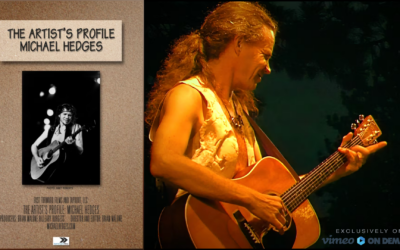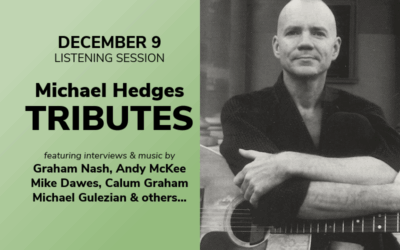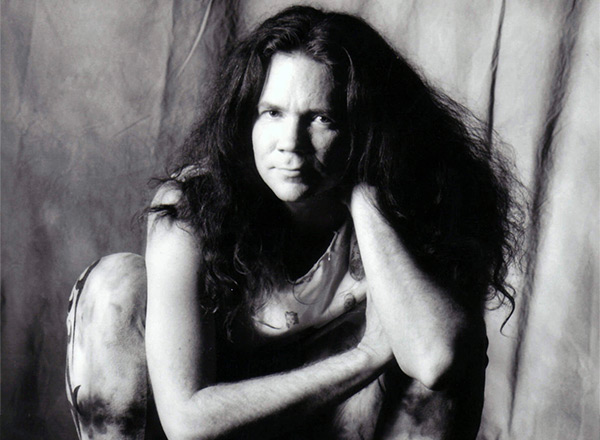From original Nomadland.com website.
The following is taken verbatim from Michael’s 1997 contract rider and provides an interesting glimpse into what was required for his incredible live sound.
His shows were not typical acoustic guitar concerts.
Although it is not readily apparent from his Windham Hill recordings, Michael’s show required sound levels approaching those of a rock show, with “audiophile” quality, and especially crisp, clear high end.

A. Front of House System
1. House Console
24 channels, 6 post-fader, post-EQ aux sends
4 bands parametric or sweep EQ per channel
Ramsa (840 or better), Soundcraft (Delta 24, 500 or better) or Yamaha (PM3000 or better, please)
2. Processing
two (2) digital reverbs: LXP-15, PCM70, REV-5, REV-7; (We cannot use Yamaha SPX-90 or SPX-90-II)
one compressor/limiter such as DBX 160x or 160A
CD player for backing track on flute performance [For the rarely performed “Transience”—M@]
real time analyzer set up and operating
1/3 octave graphic EQs for stereo house feed; plus individual 1/3 octave EQs for any clusters or balcony fills used
3. Amplification and Speakers
high quality PA system, tri-amped w/active crossover, capable of 100db, undistorted, 20-18Khz, to last row of seats
high quality sub-woofer system
system should be configured in stereo
system should cover venue evenly throughout with crisp, clear high end
4. Two Beyer M88 microphones with boom stands on stage (or SM-57, SM-58, beta 87)
B. Stage Monitor System
Number of mixes/cabinets may vary with instrumentation; see 3. b. below
1. Monitor Console
24 channels, 6 mixes (see 3. b. below), 2 post-aux effects sends, post-1/3-octave-EQ listen buss
4 bands parametric or sweep EQ per channel
Ramsa Monitor, Soundcraft 400B Monitor, or better (preferably not Yamaha, please)
2. Processing
two (2) digital reverbs: LXP-15, PCM70, REV-5, REV-7; (We cannot use Yamaha SPX-90 or SPX-90-II)
one compressor/limiter such as DBX 160X or 160A w/cables for channel insertion
1/3 octave EQ for each mix
3. Monitor Cabinets and Amplification (see stage plot)
Five (5) identical very high quality extended range 15″ 2-way bi-amped wedges (EV 1502ER or better), plus two (2) very high quality bi-amped side fills (OR seven wedges as above, using two raised to side fill height). Crisp, clear high end essential.
configured for 6 mixes: 2 mixes for downstage center L/R wedges, 2 mixes for side fills upstage left and right, 1 mix for Hedges’ keyboard wedge (if needed), 1 mix for bassist wedge (if bassist present); remaining wedge/amplification is for monitor engineer cue. (If no bassist, cut 1 mix + 1 wedge. If Hedges will not play keyboard, cut 1 mix + 1 wedge.)
C. AC Power requirements
Monitor and Front-of-House Sound must be powered together on same leg, but on separate leg from lights.
Please provide 120 volt AC outlets at each of the following 5 locations:
Four just onstage of Monitor mixer to power Artist’s rack
Four at Monitor mixer position to power tuner, etc.
Four at House mixer position to power DAT machine, etc.
Four at stage left to power Hedges’ keyboard setup (if present)
Four downstage right for bass rack (if present) and/or any AC powered Hedges pedal effects
11/18 – Michael Hedges LIVE w/ Bobby McFerrin & Liz Story
An online screening of the unreleased 1986 concert film “Michael Hedges LIVE at Frost Amphitheater w/ Bobby McFerrin & Liz Story”
Now Available – “The Artist’s Profile: Michael Hedges”
This rare 1998 documentary remembers remembers Hedges through his own words and rare footage from a July 1996 outdoor concert with bassist Michael Manring. Now available for online streaming.
8/17/24 – Remembering Michael Hedges concert
On a warm summer night in Madison, NJ, more than 200 fans, collaborators, family and friends came together for “Remembering Michael Hedges” – a tribute/benefit concert.




